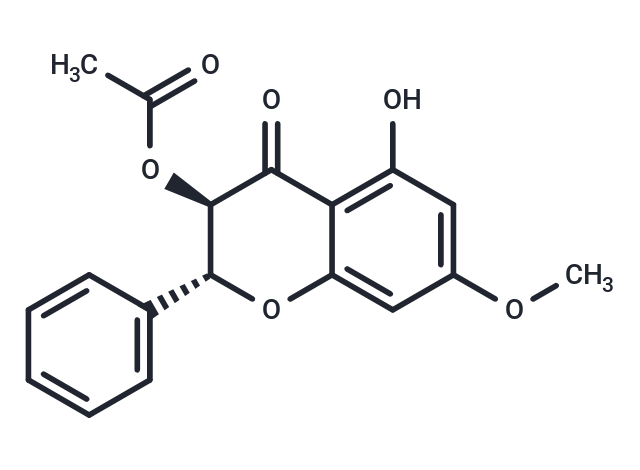Shopping Cart
- Remove All
 Your shopping cart is currently empty
Your shopping cart is currently empty

Alpinone 3-acetate showed anti-inflammatory effects and inhibited the inflammatory response in mouse ear edema models induced by 12-O-tetradecanophenol 13-acetate. Alpinone 3-acetate is a derivative of Alpinone. Alpinone is an active natural compound derived from sunflower with immunomodulatory and antiviral activities.

| Pack Size | Price | Availability | Quantity |
|---|---|---|---|
| 5 mg | $1,748 | Backorder | |
| 1 mL x 10 mM (in DMSO) | $2,098 | Backorder |
| Description | Alpinone 3-acetate showed anti-inflammatory effects and inhibited the inflammatory response in mouse ear edema models induced by 12-O-tetradecanophenol 13-acetate. Alpinone 3-acetate is a derivative of Alpinone. Alpinone is an active natural compound derived from sunflower with immunomodulatory and antiviral activities. |
| Targets&IC50 | Differentiation (THP-1 cells):55μM, Inflammation (mice):176 μg/ear (ID50) |
| In vivo | Alperisone 3-acetate has anti-inflammatory properties and inhibits the inflammatory response in a mouse ear edema model induced by 12- o -tetradecanol 13-acetate. [1] |
| Molecular Weight | 328.32 |
| Formula | C18H16O6 |
| Cas No. | 139906-49-3 |
| Smiles | O(C(C)=O)[C@@H]1[C@H](OC=2C(C1=O)=C(O)C=C(OC)C2)C3=CC=CC=C3 |
| Relative Density. | 1.37 g/cm3 (Predicted) |
| Storage | store at low temperature,keep away from direct sunlight | Powder: -20°C for 3 years | In solvent: -80°C for 1 year | Shipping with blue ice. |

Copyright © 2015-2025 TargetMol Chemicals Inc. All Rights Reserved.